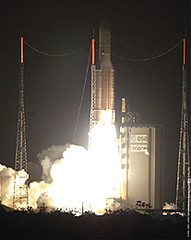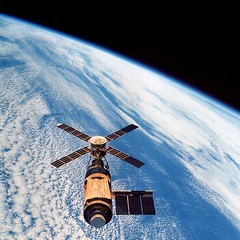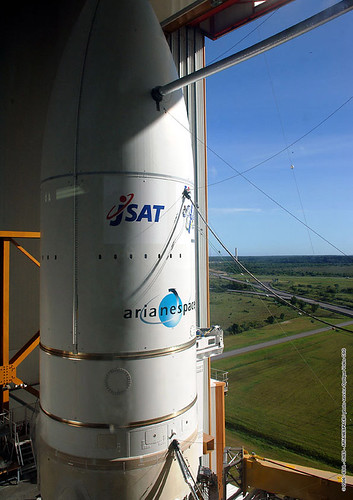Arianespace Successfully Launches Twin Satellite Payload; Koreasat 5 to Lift via Sea Launch Next Week
Monday, August 14th, 2006Arianspace’s Friday evening launch of a twin satellite payload, which Spektor previewed last week, was a success. From the mission update:
After an on-time lift-off at 7:15 p.m. from Europe’s Spaceport in French Guiana, the heavy-lift Ariane 5 delivered Japan’s JCSAT-10 telecommunications spacecraft and the European Syracuse 3B secure military relay platform into an accurate geostationary transfer orbit.
Tonight’s flight was Ariane 5’s 28th mission, and marked its 14th consecutive success – underscoring the launcher’s maturity. JCSAT-10 was installed in the upper payload position on Ariane 5, and was released approximately 27 min. into the mission. This was followed some 5 minutes later by the separation of Syracuse 3B, which occupied the lower slot in the payload "stack."
A series of photographs from the launch can be seen here.
In other commercial satellite launch news, Sea Launch will be lifting the Koreasat 5 communications satellite on the evening of August 21st. Sea Launch has provided a nice graphical display of the satellite launche’s profile and groundtrack here.
As always, we’ll have more updates on the launch as it approaches.

 Although
Although  European commercial space transportation company
European commercial space transportation company  In the annals of rocket science, there are few names that loom larger than James Van Allen.
In the annals of rocket science, there are few names that loom larger than James Van Allen.  into Federal coffers and, potentially, major advancements to tomorrow’s communications devices, including new high-speed internet offerings from satellite television providers, more vivid video on mobile phones, better cell coverage, and rapid advances in IPTV.
into Federal coffers and, potentially, major advancements to tomorrow’s communications devices, including new high-speed internet offerings from satellite television providers, more vivid video on mobile phones, better cell coverage, and rapid advances in IPTV.  Astronomy buffs who use
Astronomy buffs who use 
